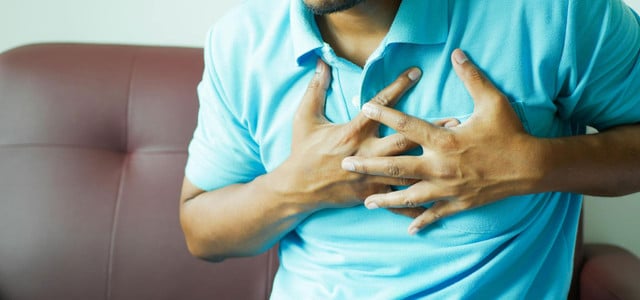
A heart attack can happen to anyone – and every minute counts. Find out which symptoms you need to take seriously, why women often show different signs than men and how to act correctly in an emergency to save lives.
A heart attack is an absolute emergency. Every minute without oxygen leads to damage to the heart muscle, which is no longer adequately supplied, reports Pharmacy Umschau. Anyone who recognizes heart attack symptoms and reacts correctly in an emergency can save lives – their own or that of another person.
Why every minute counts when you have a heart attack
During a heart attack, a coronary artery closes, in many cases due to a blood clot. The first ten to 15 minutes are crucial. The longer the heart is not supplied with oxygen, the greater the damage to the heart muscle. And if the heart can no longer supply the brain with oxygen, death threatens. Acting quickly is therefore essential for survival.
Today, in specialized emergency rooms, so-called chest pain units, narrowed or blocked vessels can be dilated during cardiac catheter treatment and treated with a vascular support, says Birgit Ruf from Pharmacy Umschau. The heart is supplied with blood again – but only if those affected call for help in time.
You should know these heart attack symptoms
Classic warning signs of a heart attack are:
- Severe pain in the chest and behind the breastbone that can radiate to the arms, back, neck, jaw, shoulder blades or upper abdomen.
- Severe burning or feeling of tightness or pressure in the chest.
- Accompanying symptoms such as shortness of breath, nausea, vomiting, sweating and cold sweat, dizziness, loss of consciousness and anxiety.
Women beware! For decades, medical research has predominantly studied men. Research findings found in men were often simply extrapolated to women. In some diseases, particularly heart attacks, there are differences in the severity of the symptoms. The Heart Foundation explains that the typically severe chest pain is sometimes less noticeable in women than in men. Instead, the following symptoms are more common in women:
- Shortness of breath/shortness of breath
- Sweats
- Back pain
- nausea
- Vomit
- Pain in the upper abdomen
- Pulling in the arms
- Inexplicable tiredness
- Depression
These more obscure warning signs are less easily recognized as a heart attack. According to the Heart Foundation, many women first think of a harmless stomach upset and therefore don’t seek help.
Act immediately: This is how you save lives
If you suspect a heart attack: “If in doubt, don’t take any risks and call the rescue center on 112,” advises cardiologist Prof. Dr. Thorsten Kessler, head of the Chest Pain Unit at the German Heart Center in Munich, told the Apotheker-Umschau. “And above all, don’t go or drive to the clinic yourself,” explains Birgit Ruf. Finally, the emergency services can begin life-saving treatment on the way while they take you to the appropriate clinic.
The following information is important when calling emergency services:
- Who am I?
- Where am I?
- What happened?
While you wait for emergency services, you should try to remain calm. Loose, restrictive clothing such as ties or belts. If you are home alone, open the door so that emergency services can easily get to you.
Helping unconscious people:
The Heart Foundation recommends first and foremost checking whether the person in question is actually unconscious. If they do not respond to loud speeches and the chest does not move, cardiac arrest is likely and you should call emergency services immediately. Once all questions have been answered, you can turn to the unconscious person and begin chest compressions. (If other people are present, one person should begin CPR while the other calls emergency services.)
The Heart Foundation expressly advises laypeople against mouth-to-mouth resuscitation and recommends focusing on chest compressions until the emergency services arrive. You can read exactly how this works on the Heart Foundation website.
And so that you don’t suffer a heart attack yourself, our tips for prevention will help you:
** marked with ** or orange underlined Links to sources of supply are partly partner links: If you buy here, you are actively supporting Techzle\.com, because we then receive a small part of the sales proceeds. More info.